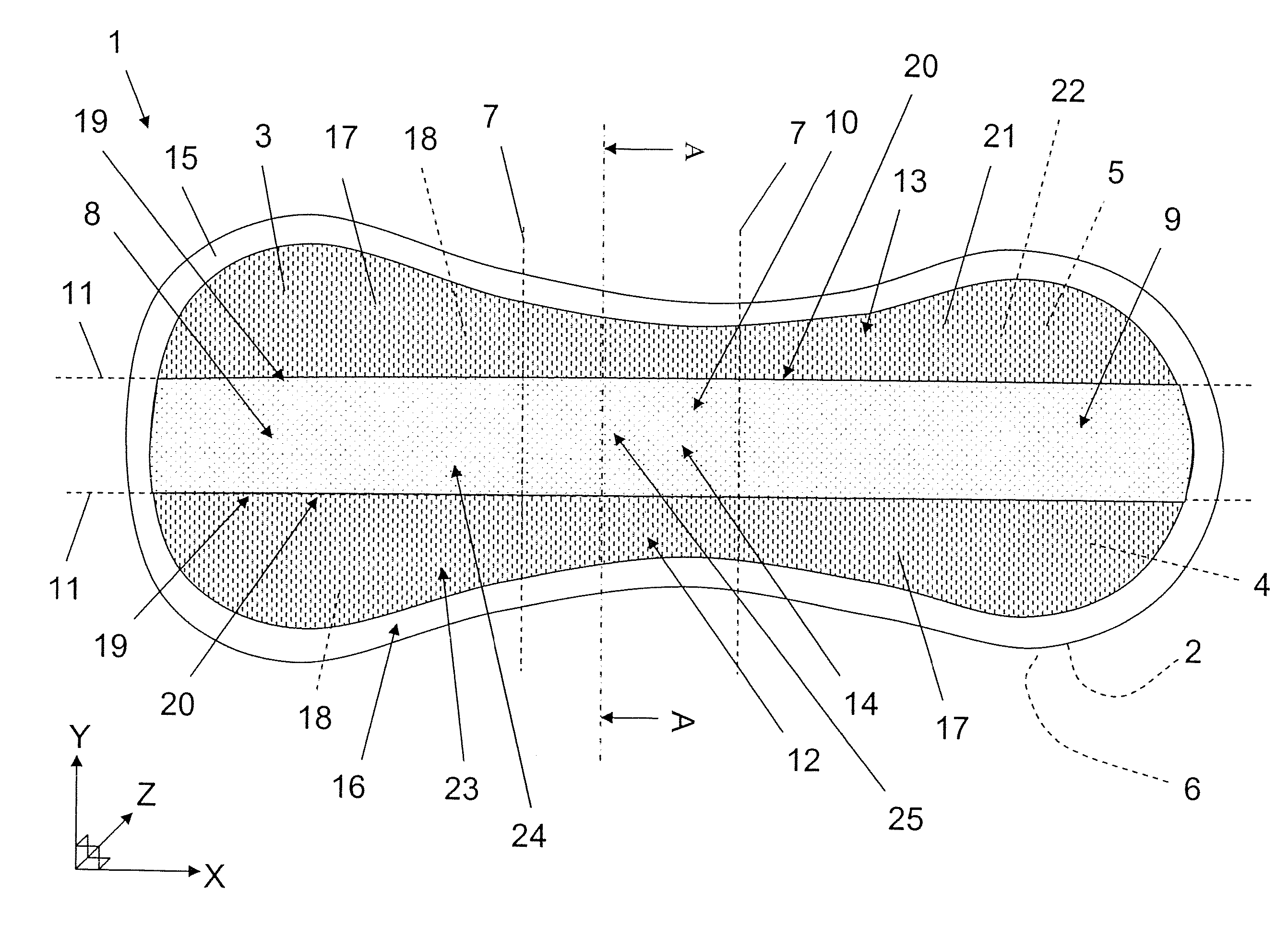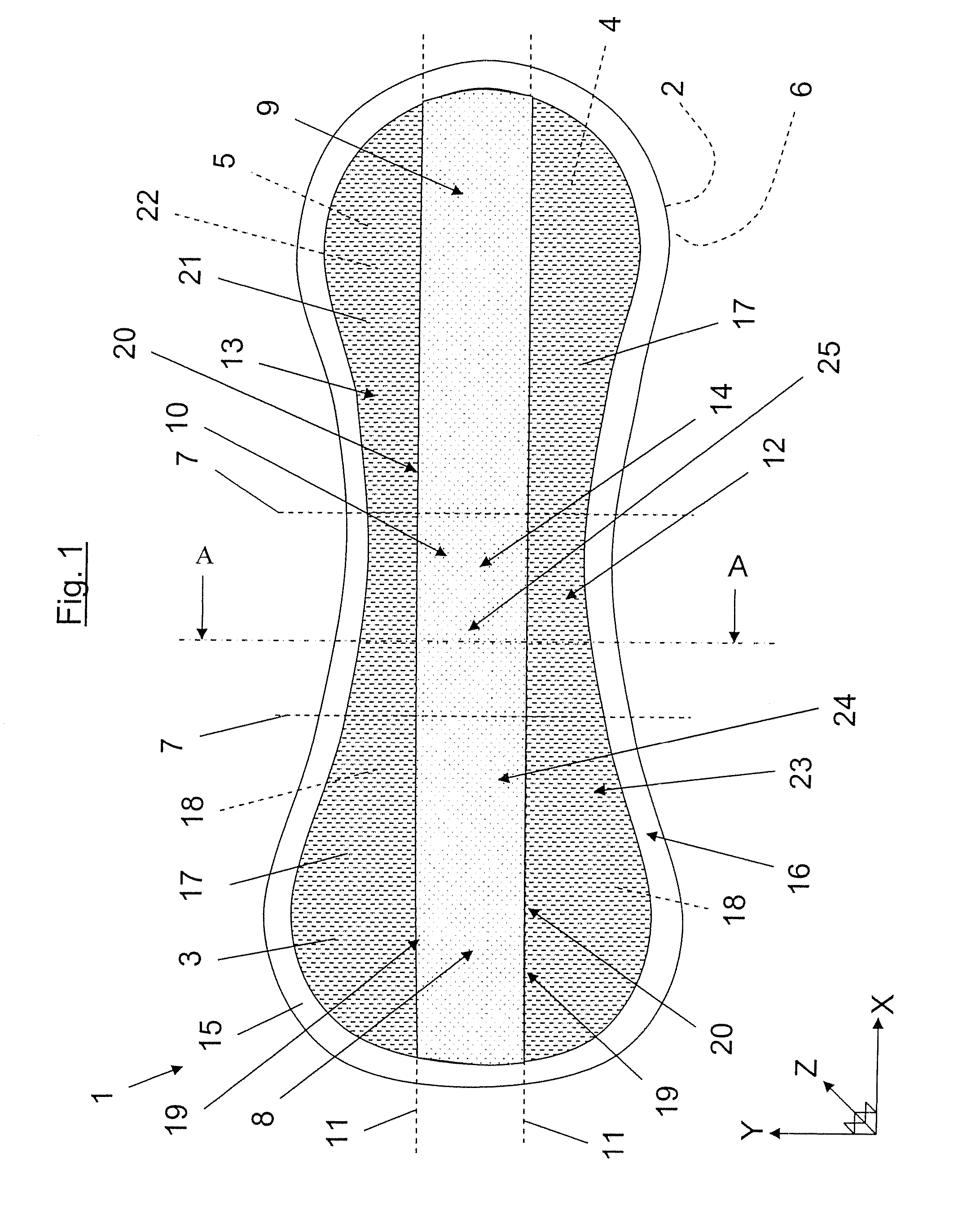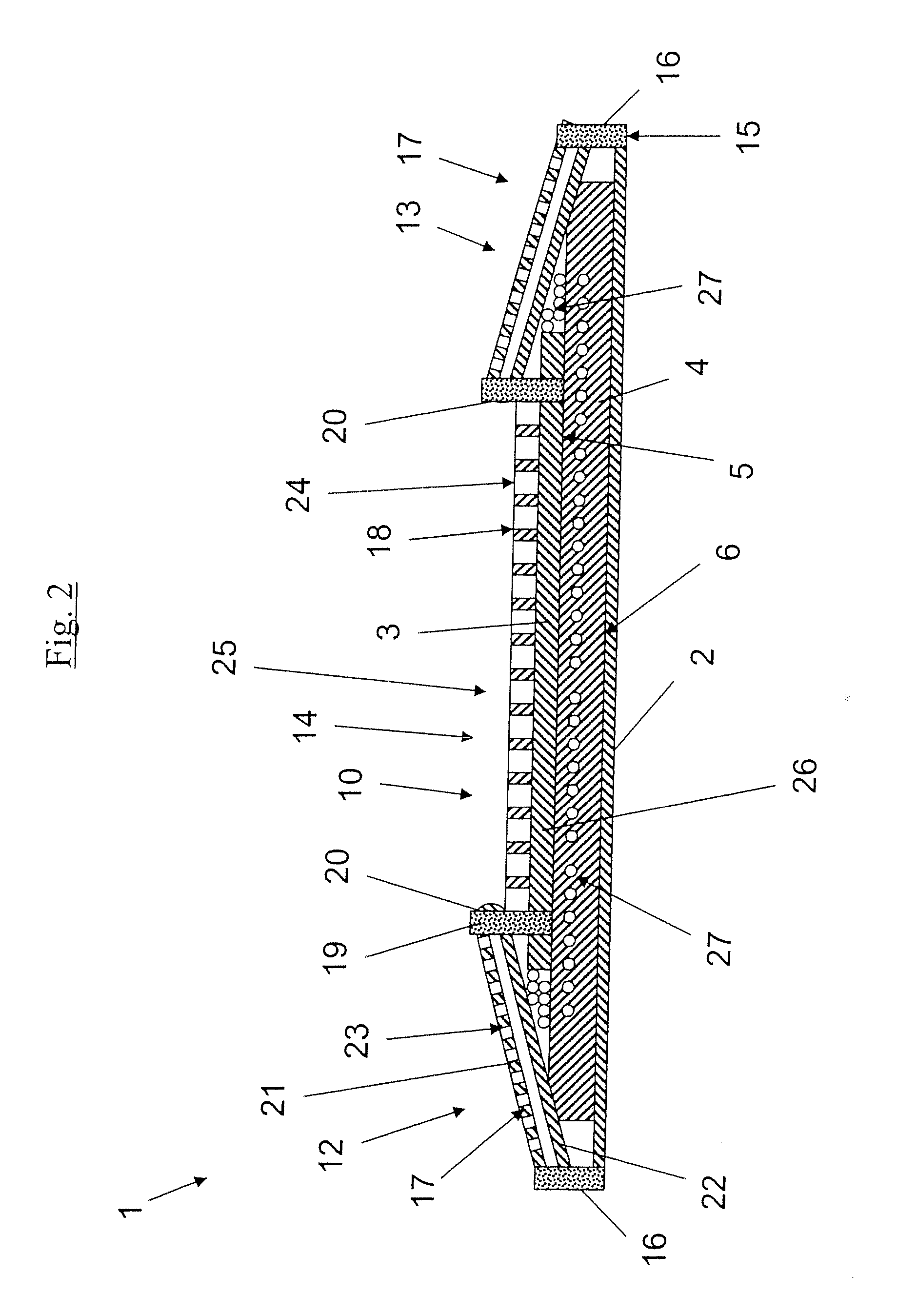Top layer for an absorbent product
a technology of absorbent products and top layers, applied in the field of absorbent products, can solve the problems of chafing on the wearer, crumpled side zones, and particularly great material choice for the top layer,
- Summary
- Abstract
- Description
- Claims
- Application Information
AI Technical Summary
Benefits of technology
Problems solved by technology
Method used
Image
Examples
first embodiment
[0058]FIG. 2 depicts schematically a sectional view along the line A-A in FIG. 1 according to the invention. FIG. 2 shows that the side zones 12, 13 comprise the first material layer 17 double-folded and including the first part 21 containing a number of holes 23 and the second part 22 which lacks holes. The first part 21 is positioned on the top side of the absorbent product 1, that is to say on that part of the absorbent product 1 which is intended to face towards a wearer during use. The perforated first part 21 is intended here to give the material in the side zones 12, 13 a textile and comfortable feel for the wearer. The second part 22 is arranged between the first part 21 and the subjacent laminated structure consisting of a receiving layer 26, the absorption body 4 and the backing layer 2.
[0059]FIG. 2 shows that the absorption body 4 contains superabsorbents 27 (hereinafter referred to as SAP) in the form of small granules. FIG. 2 also shows that the SAP granules 27 have mig...
second embodiment
[0062]FIG. 3 depicts schematically a sectional view along the line A-A in FIG. 1 according to the invention. FIG. 2 and FIG. 3 are identical apart from the execution of the first material layer 17. FIG. 3 shows that the first part 21 is longer than the second part 22. The inner joining zones 19 bond the top layer 3 and the receiving layer 26 together at the point where the first material layer 17 has its fold line 20, that is to say along the longitudinally extending lines 11. The outer joining zone 16 bonds the first part 21 and the backing layer 2 together. The outer joining zone 16 can also contain the absorption body 4, in which case the edge part 15 possesses a softer feel than when only the top layer 3 and the backing layer 2 form the edge part.
[0063]FIG. 3 shows that the first part 21 and the second part 22 are joined together via interjacent joining zones 28 adjacent to the area where the second part 22 ends. The second part 22 ends at a predetermined distance between the fo...
third embodiment
[0064]FIG. 4 depicts schematically a sectional view along the line A-A in FIG. 1 according to the invention. FIG. 2 and FIG. 4 are identical apart from the execution of the first material layers. FIG. 4 shows that the first part 21 and the second part 22 have identical lengths, and that the inner joining zones 19 bond the top layer 3 and the receiving layer 26 together at the point where the first material layer 17 has its fold line 20, that is to say along the longitudinally extending lines 11. The outer joining zone 16 bonds the first part 21, the second part 22 and the backing layer 3 together. The outer joining zone 16 can also contain the absorption body 4, in which case the edge part 15 possesses a softer feel than when only the top layer 3 and the backing layer 2 form the edge part.
[0065]FIG. 4 shows that the first part 21 lacks holes, and that the second part contains the holes 23. The first part 21 is positioned on the upper side of the absorbent product, that is to say on ...
PUM
 Login to View More
Login to View More Abstract
Description
Claims
Application Information
 Login to View More
Login to View More - R&D
- Intellectual Property
- Life Sciences
- Materials
- Tech Scout
- Unparalleled Data Quality
- Higher Quality Content
- 60% Fewer Hallucinations
Browse by: Latest US Patents, China's latest patents, Technical Efficacy Thesaurus, Application Domain, Technology Topic, Popular Technical Reports.
© 2025 PatSnap. All rights reserved.Legal|Privacy policy|Modern Slavery Act Transparency Statement|Sitemap|About US| Contact US: help@patsnap.com



